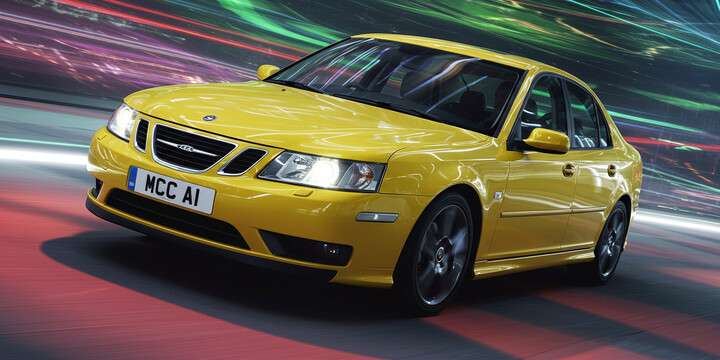
SAAB 9-3 (2007-11) 2DR CONVERTIBLE 2.0T 210 AERO
The SAAB 9-3 (2007-11) 2DR CONVERTIBLE 2.0T 210 AERO is a stylish and sporty convertible that’s well-suited to drivers who enjoy open-air motoring and dynamic driving experiences. As a compact convertible, it offers a perfect blend of performance, comfort, and distinctive Scandinavian design. In the UK market, this model is appreciated for its sporty appeal and practicality, making it a popular choice for those seeking a fun, yet reliable vehicle for everyday use or leisure drives.
This particular model stands out with a powerful 2.0T turbocharged engine producing 210 horsepower, ensuring lively acceleration and a spirited driving experience. Its sleek two-door design, combined with a premium feel and signature Saab safety features, attracts enthusiasts and those looking for something different from typical convertibles. Generally, it’s ideal for drivers who value style, sporty handling, and a touch of luxury—perfect for weekend getaways, city driving, or weekend cruising. With an average mileage of around 71,262 miles and a typical private sale valuation of approximately £4,000, the SAAB 9-3 Aero convertible offers a compelling blend of performance and affordability. Known for its reliability and unique design, the SAAB 9-3 Aero ranks well among its rivals as a distinctive, fun-to-drive convertible choice in the used car market.

average use

Based on the recent mileage data for the Saab 9-3 (2007-11) Convertible 2.0T 210 Aero, the most common recorded mileage range is between 50,000 and 60,000 miles, accounting for 33.3% of the vehicles. Another significant portion, also at 33.3%, falls within the 60,000 to 70,000 miles range. Smaller proportions, each at 11.1%, are seen in the 80,000 to 90,000, 110,000 to 120,000, and 30,000 to 40,000-mile ranges. This distribution suggests that many of these vehicles tend to be within the mid-mileage range—primarily between 50,000 and 70,000 miles—indicating they are likely to be well-used but not heavily high-mileage.

vehicle values

The data indicates that for the Saab 9-3 (2007-11) 2DR Convertible 2.0T 210 Aero, the majority of private sale valuations fall within the £4,000 to £5,000 range, accounting for 44.4% of the sample. A significant portion, 33.3%, are priced between £3,000 and £4,000, while smaller proportions are in the £2,000 to £3,000 (11.1%) and £5,000 to £6,000 (11.1%) brackets. This suggests that, most commonly, private sales are expected to hover around the £4,000 to £5,000 mark, with fewer vehicles valued below or above this range.

production years

The data indicates that the majority of SAAB 9-3 (2007-11) 2DR Convertible 2.0T 210 Aero models in the sample were manufactured in 2010, accounting for 55.6%. Smaller proportions were made in 2009 (22.2%) and 2011 (22.2%). This suggests that the 2010 model year is the most common among these vehicles, possibly reflecting higher production or availability during that year.

colour popularity

The data indicates that for the SAAB 9-3 (2007-11) 2DR Convertible 2.0T 210 Aero model, black is the most common paint colour, accounting for approximately 33.3% of vehicles. It is followed by grey and white, each representing about 22.2%, while silver and red are less prevalent, each at around 11.1%. This suggests a preference for darker, classic colours among owners of this model, with a significant proportion also opting for lighter shades like grey and white.

ownership cycle

The data indicates that for the 'SAAB 9-3 (2007-11) 2DR CONVERTIBLE 2.0T 210 AERO', the majority of vehicles—specifically 44.4%—have had two registered keepers. The remaining vehicles are distributed among three, four, and five keepers, each representing 11.1%, with three keepers being the next most common at 33.3%. This suggests that most of these vehicles tend to change hands relatively infrequently, often remaining with the same owner for extended periods before being sold or transferred.

engine choices

The data indicates that all vehicles of the Saab 9-3 (2007-11) 2DR Convertible 2.0T 210 Aero model in the sample are powered solely by petrol engines, with a consistent engine capacity data covering 1998 onwards. This suggests a uniform fuel type across this model, and likely a standardized engine size, although the exact capacity is not specified in the provided data. Overall, these vehicles are petrol-powered and share similar engine specifications.












